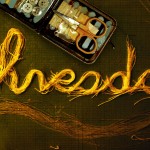Last week, I wrote about my belief that the cross is too beautiful to fit many popular theologies. It isn’t beautiful in itself, for a Roman cross represents the power of Empire, a power that is always opposed to the way of Jesus. Rather, the beauty is in the One who chose to endure unjust suffering, knowing that the grave would not be able to hold God’s Messiah down! The beauty is in a Jesus who models what it means to love our enemies while humbly reminding us that we all were God’s enemies (Romans 5.10).
One thing that I’m convinced of is that God did not pour out Divine wrath against Jesus on the cross in order to be appeased. This view, as Mark Baker states, “can too easily lead to a situation in which we might conclude that Jesus came to save us from God.”[1] I plan to nuance this statement in future articles, but for now it suffices to say that we need alternative ways to think about the cross.
In fact, part of the problem is that we’ve limited the cross to one primary explanation (God’s wrath being poured out on Jesus as a substitute for sinners to appease God’s bind to the Law). I want to suggest that the New Testament gives multiple images and metaphors for expressing the multifaceted significance of the cross. Today, lets explore one of these through the lens of a popular story. Notice that this is one example of how substitution can still be present in atonement theology without the appeasement of God’s wrath (which, as popularly understood, isn’t in the New Testament).
As a child, I remember reading C.S. Lewis’ wonderful masterpiece – The Lion, the Witch, and the Wardrobe in public school. What I didn’t know then that I know now, is that the scene where Aslan is killed on behalf of Edmund the traitor is a wonderful picture of a theory of atonement that is often called, Christus Victor (or, Jesus’ victory over the powers). So, let’s try to look at how substitution works out in this understanding of the cross, which some would consider the central story from out of which all other atonement images arise.
 Edmund betrays good, and the deep magic law of Narnia demands that such a traitor be punished by death. The White Witch makes sure that the deep magic would be appeased and threatens to kill the traitor. Aslan then offers his life as a substitute for the boy’s. One life for a life. Edmund is saved, but at a cost. The great Lion would have to suffer and die at the hands of the evil White Witch and her minions. After mocking and torturing Aslan, the Witch stabs him with a knife and kills him. When the evil deed is done, she screams out in pride: “…the great Fool, the great Cat, lies dead.”[2]
Edmund betrays good, and the deep magic law of Narnia demands that such a traitor be punished by death. The White Witch makes sure that the deep magic would be appeased and threatens to kill the traitor. Aslan then offers his life as a substitute for the boy’s. One life for a life. Edmund is saved, but at a cost. The great Lion would have to suffer and die at the hands of the evil White Witch and her minions. After mocking and torturing Aslan, the Witch stabs him with a knife and kills him. When the evil deed is done, she screams out in pride: “…the great Fool, the great Cat, lies dead.”[2]
But, just as with Jesus, the story does not end there. On the other side of death is resurrection! Aslan comes back to life, to the shock of everyone because of a deeper magic that not even the White Witch knows about. He is thereby victorious over death and victorious over the evil Witch.
Now let’s imagine that we are Edmund. We are the traitors who have fallen prey to the luring of the demonic powers and the devil. And because of our betrayal, our hands are dirty and cannot be cleaned by our own doing. So, Jesus (Aslan) steps into our situation and offers his life as our ransom. Jesus becomes our substitute who endures the full wrath owed to a traitor of the kingdom of God, which is death. Now notice that the death of Aslan was not something that was executed by Aslan’s Father, but rather was at the hands of the White Witch and her evil companions (the devil and demons/powers). When Aslan is raised back to life by the deeper magic, he conquers the power that the Witch thought she had over him and even conquers her final weapon, death.
In sum, Aslan (Jesus) is a substitute for us who were under the curse of sin (betrayal) and who allowed ourselves to be lured into the traps of the White Witch (the devil and powers). Aslan endured the full wrath of evil by dying in Edmund’s (our) place. And then, Aslan was vindicated over death through resurrection, guaranteeing both his own victory and the victory of those who give him their allegiance. This is Christus Victor. Jesus is our substitute who defeated the powers of evil when we were powerless to do so. May we live this week in light of that victory in our neighborhoods, workplaces, schools, families, and world!
[1] Mark D. Baker, ed., Proclaiming the Scandal of the Cross: Contemporary Images of the Atonement (Grand Rapids, Mich.: Baker Academic, 2006), 22.
[2] C.S. Lewis, The Lion, the Witch, and the Wardrobe, Chronicles of Narnia (New York: Harper Trophy, 1994), 171.












